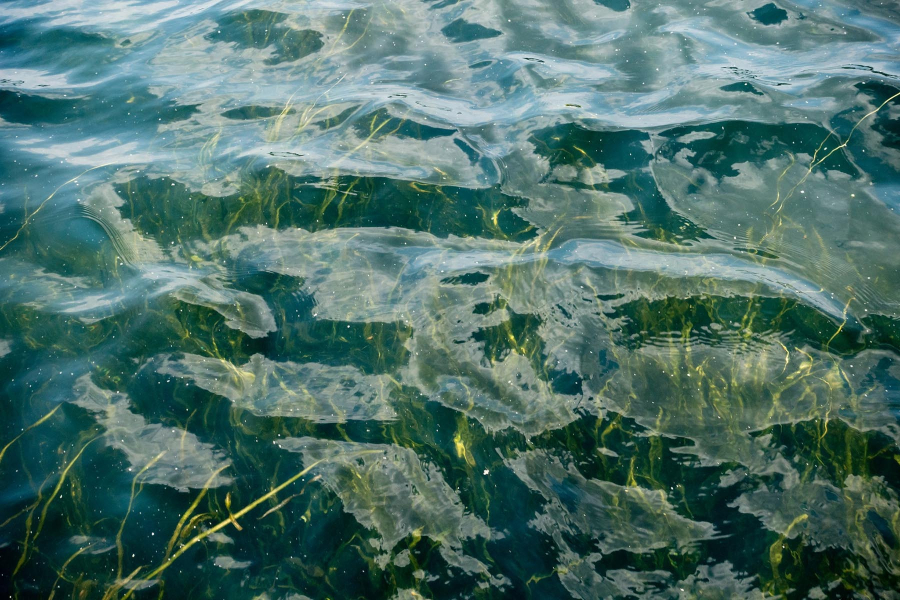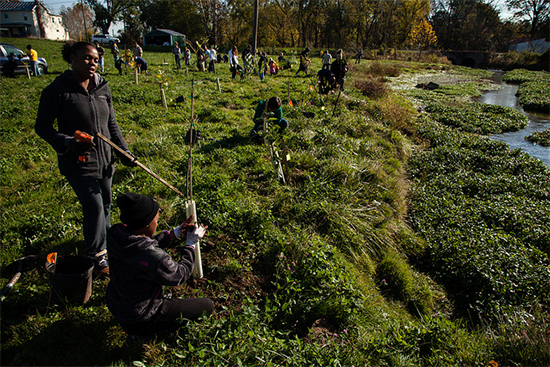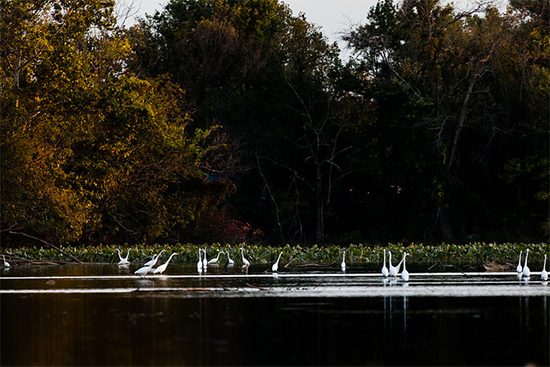Pollution levels in nine rivers remain below long-term average in 2013
Lowering nutrient and sediment loads could have a positive impact on the Chesapeake Bay.

The amount of nutrient and sediment pollution that flowed from nine major rivers into the Chesapeake Bay remained below the 25-year average in 2013. While scientists expect this to have a positive impact on the long-term health of the nation’s largest estuary, much of the Bay’s tidal waters remain impaired: between 2011 and 2013, just 29 percent of the water quality standards necessary to support underwater plants and animals were achieved.
Excess nutrients and sediment are among the leading causes of the Bay’s poor health. Nitrogen and phosphorus can fuel the growth of harmful algae blooms that lead to low-oxygen “dead zones” that suffocate marine life. Sediment can block sunlight from reaching underwater grasses and suffocate shellfish. Lowering the amount of nutrients and sediment moving from our streets, lawns and farm fields into the water is a critical step in the restoration of the Bay, and scientists have attributed the below-average pollution loads of 2013 to below-average river flow and the pollution-reducing practices our partners have put in place on the land.
Because pollution in our rivers has a direct impact on water quality in the Bay, the Chesapeake Bay Program tracks both environmental indicators to gain a wider picture of watershed health.

Pollution loads and trends
Our partners at the U.S. Geological Survey (USGS) monitor nutrient and suspended sediment loads delivered from the large watersheds located upstream of nine river monitoring stations to the Chesapeake Bay. Together, these stations—which are located on the Appomattox, Choptank, James, Mattaponi, Pamunkey, Patuxent, Potomac, Rappahannock and Susquehanna rivers—reflect loads delivered to the Bay from 78 percent of its watershed. Data show that nutrient and sediment loads measured in water year 2013 were below the long-term average.
- About 160 million pounds of nitrogen reached the Bay during the 2013 water year, which is below the long-term average of 212 million pounds. Between 1985 and 2013, trends in total nitrogen concentrations improved at five out of nine sites, including the James, Patuxent, Potomac, Rappahannock and Susquehanna rivers. Over the past decade, trends in total nitrogen concentrations have improved at three sites and degraded at one site.
- About 10 million pounds of phosphorus reached the Bay during the 2013 water year, which is below the long-term average of 14.6 million pounds. Between 1985 and 2013, trends in total phosphorus concentrations improved at three sites, including the James, Patuxent and Potomac rivers. Over the past decade, trends in total phosphorus concentrations have degraded at two sites. Other sites experienced no significant change.
- About 2.71 million tons of sediment reached the Bay during the 2013 water year, which is below the long-term average of 5.2 million tons. Between 1985 and 2013, trends in suspended sediment concentrations have improved at three sites, including the Choptank, Patuxent and Potomac rivers. Over the past decade, trends in total sediment concentrations have degraded at four sites. Other sites experienced no significant change.

Water quality standards achievement
The Chesapeake Bay Program measures progress toward the achievement of water quality standards in the Bay and its tidal tributaries using three environmental factors: dissolved oxygen, water clarity or underwater grass abundance, and chlorophyll a. Data are assessed in three-year periods. After more than a decade of steady improvement between 1989 and 2002, the attainment of water quality standards has seen mixed results. Changes seen in the past 10 years have not been statistically significant, and it is likely that the slow recovery of underwater grasses in the Upper Bay has stalled some water quality improvements.
Underwater grasses offer important habitat to underwater species and have a direct impact on water quality: healthy bay grass beds add oxygen to the water, absorb nutrient pollution, reduce wave energy and help suspended and potentially light-blocking particles like sediment settle to the bottom. Between 2009 and 2012, unfavorable growing conditions caused bay grasses to decline across the region. In 2011, for instance, heavy rains and the resulting runoff clouded the water during the spring growing season. That fall, Hurricane Irene and Tropical Storm Lee muddied the water again. Because water quality is reported in three-year assessment periods—and the most recent assessment period spanned 2011, 2012 and 2013—it is likely this drop in bay grass abundance influenced water quality results. But bay grasses have shown resilience: a dense bed on the Susquehanna Flats persisted through the storms of 2011, and showed how resilient such grass beds can be to disturbances in water quality. If bay grasses continue the recovery that took place in 2013, there could be positive effects across the wider Bay ecosystem.
Learn more about trends in nitrogen, phosphorus and sediment in rivers or about water quality standards achievement.

Comments
There are no comments.
Thank you!
Your comment has been received. Before it can be published, the comment will be reviewed by our team to ensure it adheres with our rules of engagement.
Back to recent stories